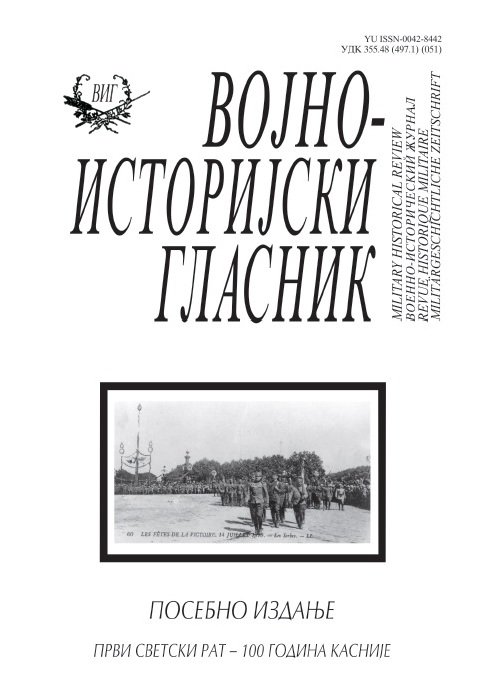УЈЕДИЊЕЊЕ СРБИЈЕ И ЦРНЕ ГОРЕ 1918. СЕЋАЊЕ КОМАНДАНТА ЈАДРАНСКИХ ТРУПА ГЕНЕРАЛА ДРАГУТИНА МИЛУТИНОВИЋА
UNIFICATION OF SERBIA AND MONTENEGRO 1918. REMEMBERING THE COMMANDER OF THE ADRIATIC TROOPS GENERAL DRAGUTIN MILUTINOVIC
Author(s): Aleksandar ŽivotićSubject(s): Military history
Published by: Institut za strategijska istraživanja
Keywords: Serbia; Montenegro; unification; 1918; Serbian army; Podgorica Assembley; Christhmas Rebellion.
Summary/Abstract: Serbia and Montenegro, as two modern Serbian states, striven for mutual state. Only, after the victory in the Balkan wars and with the esta‐blishment of a common border, the unification of the two states has beco‐me possible. The beginning of the First World War postponed the start of talks on the unification of the two Serbian states. During the first two war years, despite a series of political and dynastic disputes inherited from the previous period, Serbia took over the maintenance and supply of the Montenegrin army, as well as the planning of joint military operati‐ons. The decision of the Montenegrin government to capitulate and not carry out a part of the army from the country in 1916 has particularly aggravated the mutual relations. Since 1916, the unification plan has been re‐activated. The unification was not questioned, but there was no concrete plan to implement it in the work itself. Part of the Montenegrins who were in the ranks of the Serbian army insisted on unconditional uni‐ fication and detonation of the Petrović dynasty. With the breakthrough of the Thessaloniki front and the successful offensive by the Serbian and al‐ lied military forces towards Montenegro, the issue of unity has opened up. The armed uprising in Montenegro, the entry of Serbian troops into its territory, the collapse of the occupation order and the majority deter‐mination for unification, especially in the Montenegrin north, have led to the future development of events. Elections of regional representatives were an introduction to the Podgorica Assembly, which brought the unifi‐ cation act. The way of implementing the unification itself, as well as the number of supporters of the deposed King Nikola, opened the way for ar‐med and political struggles in Montenegro over the next decade.
Journal: Vojnoistorijski glasnik
- Issue Year: 2019
- Issue No: poseban
- Page Range: 303-343
- Page Count: 44
- Language: Serbian

